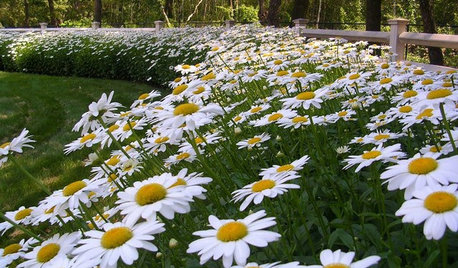Good "compromise soil" mix?
Matt Barnett
5 years ago
Related Stories

REMODELING GUIDESOld and New Make for a Jolly Good Mix in England
Give an 18th-century country cottage a contemporary addition, and what do you get? A surprisingly cohesive-looking home
Full Story
GARDENING GUIDESThe Poop Scoop: Enrich Your Soil With Good Old Manure
Get over the ick factor already — this natural super-ingredient for soil has so many benefits, you'll wonder why you ever went chemical
Full Story
FARM YOUR YARDHow to Get Good Soil for Your Edible Garden
The nutrients in your soil feed the plants that feed you. Here are tips on getting it right — just in time for planting season
Full Story
DECORATING GUIDESDecorate With Intention: The Art of Compromise
You're modern, he's traditional? Someone's collection has gotta go? These 10 steps can help keep the peace when decorating tastes clash
Full Story
CONTAINER GARDENSContainer Gardening Basics: The Dirt on Soil
Learn the types of potting soil available and the best mixes to help your containers thrive
Full Story
GARDENING GUIDESMix or Mass Daisies for Two Great Garden Looks
The classic daisy looks equally beautiful massed in borders or mixed throughout a naturalistic planting. Which look suits your style?
Full Story
GARDENING GUIDESHow to Stop Worrying and Start Loving Clay Soil
Clay has many more benefits than you might imagine
Full Story
HOUZZ TOURSMy Houzz: Travel, Art and Creative Layering Mix in Vancouver
Personality reigns in this eclectic Canadian waterfront home, thanks to the owners' artistic approach
Full Story
LANDSCAPE DESIGNHow to Shape a Rain Garden and Create the Right Soil for It
Learn how to grade, lay out and amend the soil in your rain garden to support your plants
Full Story
GARDENING FOR BUTTERFLIESGardening for the Bees, and Why It’s a Good Thing
When you discover how hard bees work for our food supply, you may never garden without them in mind again
Full StoryMore Discussions






gardengal48 (PNW Z8/9)
jane__ny
Related Professionals
Fillmore Landscape Architects & Landscape Designers · Harrison Landscape Architects & Landscape Designers · Arlington Landscape Contractors · Maywood Landscape Contractors · Medford Landscape Contractors · Mesa Landscape Contractors · Alexandria Decks, Patios & Outdoor Enclosures · Crystal Lake Decks, Patios & Outdoor Enclosures · Green Bay Decks, Patios & Outdoor Enclosures · Villa Park Decks, Patios & Outdoor Enclosures · Cary Landscape Architects & Landscape Designers · Saint Matthews Landscape Architects & Landscape Designers · Glendale Heights Landscape Contractors · St. Louis Landscape Contractors · Vadnais Heights Landscape ContractorsSage TX 9a
toxcrusadr
Sage TX 9a
toxcrusadr
Sage TX 9a
petrushka (7b)
petrushka (7b)
Matt BarnettOriginal Author
Sage TX 9a